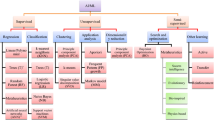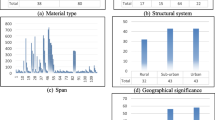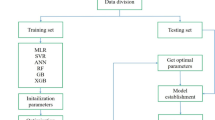Abstract
As the mining industry has evolved, there has been a rise in the number of incidents at mining sites caused by active flames in underground coal mines. It is a complex process that jeopardizes the miner’s life and property. The harm inflicted by fire threats in recent history has drawn the attention of the authorities toward implementing measures that will lessen the risk of natural disasters. It is impossible to exaggerate the significance of this finding in terms of its potential to reduce the risk associated with coal’s ability to self-heal. This study intends to show evidence that machine learning may be successfully utilized to produce accurate forecasts regarding self-healing, and its primary objective is to accomplish this goal. This research led to the development of AdaBoost classification procedures, which were then used to create methods for anticipating the occurrence of spontaneous fires in UG coal mines. The effectiveness of different ML models is compared to one another using quality metric criteria.
Access this chapter
Tax calculation will be finalised at checkout
Purchases are for personal use only
Similar content being viewed by others
References
Qiao, W., Li, X., Liu, Q.: Systemic approaches to incident analysis in coal mines: comparison of the STAMP, FRAM and ‘2–4’ models. Resour. Policy 63, 101453 (2019). https://doi.org/10.1016/j.resourpol.2019.101453
Liu, Q., Li, X., Hassall, M.: Evolutionary game analysis and stability control scenarios of coal mine safety inspection system in China based on system dynamics. Saf. Sci. 80, 13–22 (2015). https://doi.org/10.1016/j.ssci.2015.07.005
Liu, Q., Li, X., Qiao, W., Meng, X., Li, X., Shi, T.: Analysis of embedded non-safety regulation games in China’s two types of coal mines through safety performance disparity, 1980–2014. Resour. Policy 51, 265–271 (2017). https://doi.org/10.1016/j.resourpol.2017.01.009
Cai, C.: Analysis method of gas warning results of coal mine safety monitoring and control system. Ind. Mine Autom. 44, 15–18 (2018)
] Zhu, J., He, N., Li, D.: The relationship between oxygen consumption rate and temperature during coal spontaneous combustion. Saf. Sci. 50(4), 842–845 (2012). https://doi.org/10.1016/j.ssci.2011.08.023
Wang, H., Chen, C.: Experimental study on greenhouse gas emissions caused by spontaneous coal combustion. Energy Fuels 29(8), 5213–5221 (2015). https://doi.org/10.1021/acs.energyfuels.5b00327
Zhang, Y., et al.: Ultrasonic extraction and oxidation characteristics of functional groups during coal spontaneous combustion. Fuel 242, 287–294 (2019). https://doi.org/10.1016/j.fuel.2019.01.043
Zhang, Y., Li, Y., Huang, Y., Li, S., Wang, W.: Characteristics of mass, heat and gaseous products during coal spontaneous combustion using TG/DSC–FTIR technology: the impacts of oxygen concentrations and heating rates. J. Therm. Anal. Calorim. 131(3), 2963–2974 (2018). https://doi.org/10.1007/s10973-017-6738-x
Wang, H., Dlugogorski, B.Z., Kennedy, E.M.: Coal oxidation at low temperatures: oxygen consumption, oxidation products, reaction mechanism and kinetic modelling. Prog. Energy Combust. Sci. 29(6), 487–513 (2003). https://doi.org/10.1016/S0360-1285(03)00042-X
Arisoy, A., Beamish, B.: Reaction kinetics of coal oxidation at low temperatures. Fuel 159, 412–417 (2015). https://doi.org/10.1016/j.fuel.2015.06.054
Ren, X., et al.: Novel sodium silicate/polymer composite gels for the prevention of spontaneous combustion of coal. J. Hazard Mater. 371, 643–654 (2019). https://doi.org/10.1016/j.jhazmat.2019.03.041
Cheng, W., Hu, X., **e, J., Zhao, Y.: An intelligent gel designed to control the spontaneous combustion of coal: fire prevention and extinguishing properties. Fuel 210, 826–835 (2017). https://doi.org/10.1016/j.fuel.2017.09.007
Hu, X., Cheng ,W,. Shao, Z:. Novel authigenic gas foaming hydrogels for preventing coal spontaneous combustion. e-Polymers 15(5), 361–368 (2015)
Karakurt, I., Aydin, G., Aydiner, K.: Mine ventilation air methane as a sustainable energy source. Renew. Sustain. Energy Rev. 15(2), 1042–1049 (2011)
Zhang, Q., Ma, Q.: Dynamic pressure induced by a methane–air explosion in a coal mine. Process. Saf. Environ. Prot. 93, 233–239 (2015)
Ren, T., Balusu, R.: Proactive goaf inertisation for controlling longwall goaf heatings. Procedia Earth Planet. Sci. 1(1), 309–315 (2009)
Ren, T.: CFD modelling of longwall goaf gas flow to improve gas capture and prevent goaf self-heating. J. Coal Sci. Eng. (China) 15(3), 225–228 (2009)
Qi, G.S., Wang, D.M., Zheng, K.M., Xu, J., Qi, X.Y., Zhong, X.X.: Kinetics characteristics of coal low-temperature oxidation in oxygen-depleted air. J. Loss Prev. Process Ind. 35, 224–231 (2015)
Qu, L.N., Song, D.Z., Tan, B.: Research on the critical temperature and stage characteristics for the spontaneous combustion of different metamorphic degrees of coal. Int. J. Coal Prep. Util. 38(5), 221–236 (2018)
Rassafi, A.A., Ganji, S.S., Pourkhani, H.: Road safety assessment under uncertainty using a multi attribute decision analysis based on Dempster-Shafer theory. KSCE J. Civ. Eng. 22(8), 3137–3152 (2018)
Chen, C.-H., Hwang, F.-J., Kung, H.-Y.: Travel time prediction system based on data clustering for waste collection vehicles. IEICE Trans. Inf. Syst. E102.D(7), 1374–1383 (2019)
Chen, C.-H.: A cell probe-based method for vehicle speed estimation. IEICE Trans. Fundam. Electron. Commun. Comput. Sci. E103.A(1), 265–267 (2020)
Chen, C.H., Song, F.Y., Hwang, F.J., Wu, L.: A probability density function generator based on neural networks. Physica A Stat. Mech. Appl. 541 (2020). Article ID 123344
Chen, Y., Gu, C., Shao, C., et al.: An approach using adaptive weighted least squares support vector machines coupled with modified ant lion optimizer for dam deformation prediction. Math. Probl. Eng. 2020 (2020). 23 p. Article no. 9434065
Zhang, Q., Li, H.G., Li, H.: An improved least squares SVM with adaptive PSO for the prediction of coal spontaneous combustion. Math. Biosci. Eng. 16(4), 3169–3182 (2019)
Zhang, S., Chen, J.Q., Zhang, D.: Gob spontaneous combustion prediction based on neural network. Transducer Microsyst. Technol. 31(5), 10–12 (2012)
Tong, X., Fang, W., Yuan, S., Ma, J., Bai, Y.: Application of Bayesian approach to the assessment of mine gas explosion. J. Loss Prev. Process Ind. 54, 238–245 (2018)
Pejic, L.M., Torrent, J.G., Querol, E., Lebecki, K.: A new simple methodology for evaluation of explosion risk in underground coal mines. J. Loss Prev. Process Ind. 26, 1524–1529 (2013)
Li, M., Wang, H., Wang, D., Shao, Z., He, S.: Risk assessment of gas explosion in coal mines based on fuzzy AHP and Bayesian network. Process Saf. Environ. Prot. 135, 207–218 (2020)
Zhang, Q.: Risk assessment of gas explosion disaster based on random forest model. IOP Conf. Ser. Earth Environ. Sci. 446 (2020). Article no. 22081
He, R.J., Du, Y.H.: Application of improved particle swarm-optimization neural network in coalmine safety evaluation. IOP Conf. Ser. Mater. Sci. Eng. 423 (2018). Article no. 12007
Li, X., Li, N.W., Yang, Z.: Coal mine safety evaluation model based on quantum genetic algorithm. Comput. Syst. Appl. 21(7), 101–105 (2012)
Zhang, J.A., Li, W.J., Guan, Y.L.: Application of improved FNN in coal mine safety production warning system. Coal Eng. 8, 168–171 (2013)
Wang, D., Liu, L., Zhang, X.M.: The improvement and application of the grey correlation degree method in the evaluation of coal mine intrinsic safety. J. Saf. Sci. Technol. 9(1), 151–154 (2013)
Li, D.W., Li, S., You, M.J.: Research on mine safety situation prediction model: the case of gas risk. In: Proceedings of the 2019 11th International Conference on Wireless Communications and Signal Processing (WCSP), **’an, China, pp. 1–6, October 2019
Sun, X.D., Zhang, L.X., Qi, H.L.: Coal mine safety production risk assessment model based on fuzzy analytic hierarchy process. Ind. Saf. Environ. Prot. 40(1), 65–68 (2014)
Dai, Z., Liu, J.H., Wang, W.: Collection and fusion of gas density data and its security warning for coal mine. Comput. Engi. Des. 37, 783–787 (2016)
Peng, H., Wang, J., Cheng, P.: A linguistic intuitionistic multi-criteria decision-making method based on the Frank Heronian mean operator and its application in evaluating coal mine safety. Int. J. Mach. Learn. Cybern. 9(6), 1053–1068 (2018)
Yeturu, K.: Chapter 3 - Machine learning algorithms, applications, and practices in data science. In: Srinivasa Rao, A.S.R., Rao, C.R. (eds.) Handbook of Statistics, vol. 43, pp. 81–206. Elsevier (2020). ISSN 0169-7161, ISBN 9780444642110. https://doi.org/10.1016/bs.host.2020.01.002
Ding, Y., Zhu, H., Chen, R., Li, R.: An efficient AdaBoost algorithm with the multiple thresholds classification. Appl. Sci. 12, 5872 (2022). https://doi.org/10.3390/app12125872
Author information
Authors and Affiliations
Corresponding author
Editor information
Editors and Affiliations
Rights and permissions
Copyright information
© 2023 The Author(s), under exclusive license to Springer Nature Switzerland AG
About this paper
Cite this paper
Dogra, S.K., Pramanik, J., Jayanthu, S., Samal, A.K. (2023). Machine Learning Applications: Coal Fire Prediction Using Graham’s Ratio. In: Sinha, A., Sarkar, B.C., Mandal, P.K. (eds) Proceedings of the 10th Asian Mining Congress 2023. AMC 2023. Springer Proceedings in Earth and Environmental Sciences. Springer, Cham. https://doi.org/10.1007/978-3-031-46966-4_13
Download citation
DOI: https://doi.org/10.1007/978-3-031-46966-4_13
Published:
Publisher Name: Springer, Cham
Print ISBN: 978-3-031-46965-7
Online ISBN: 978-3-031-46966-4
eBook Packages: Earth and Environmental ScienceEarth and Environmental Science (R0)




